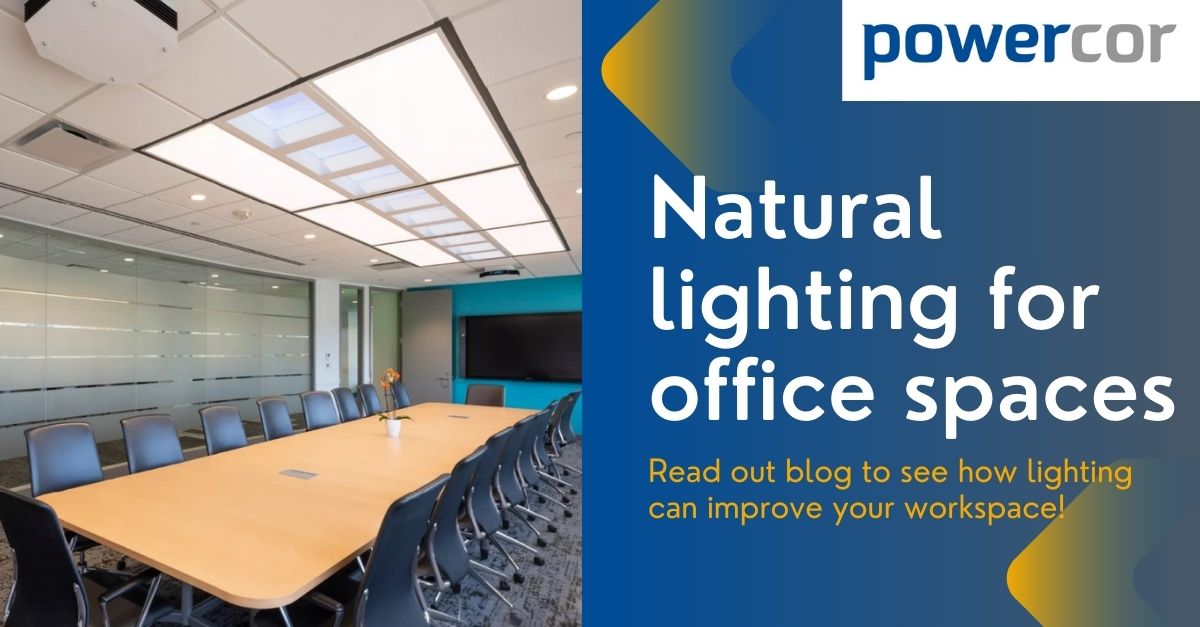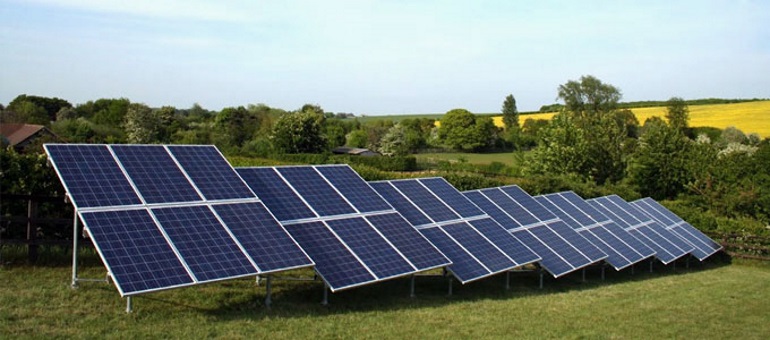In today’s fast-paced world, individuals spend a significant portion of their working lives indoors, making natural lighting for office spaces an essential consideration for enhancing productivity and well-being.
The quality of indoor lighting can have a significant effect on workers’ well-being and efficiency. Recognising the transformative benefits of natural light, modern solutions are bringing sunlight’s positive effects into office environments. By incorporating innovative LED lighting systems that replicate natural lighting, office spaces can be transformed into vibrant and healthy environments, enhancing mood, focus, and overall productivity.
Why Natural Lighting for Office Spaces Matters
Enhancing mood and well-being
Natural lighting has a direct impact on mental health and emotional well-being. Studies show that sunlight stimulates serotonin production, which boosts happiness and reduces stress. In workplaces where natural light is limited, lighting systems that mimic daylight can help combat seasonal affective disorder (SAD) and create a positive atmosphere, ensuring employees remain energised and motivated.
Research has suggested that both natural and artificial bright light, particularly in the morning, can improve significantly health outcomes such as depression, agitation, sleep, circadian rest-activity, and seasonal affective disorder.
Boosting productivity and alertness
Natural lighting in office spaces has been consistently linked to increased productivity. Employees exposed to natural light report better improved sleeping patterns, focus, improved concentration, and enhanced alertness.
One study concluded that natural light, due to its role in the production of vitamin D in human blood, can improve mental mood, attention, cognitive function, physical activity, sleep quality, and consciousness.
With this often translating into higher-quality work, introducing natural light-mimicking systems into offices, businesses can create environments that support cognitive performance and sustained engagement throughout the day.
Supporting Circadian Rhythms
Human circadian rhythms, the body’s internal clock, are heavily influenced by exposure to natural light.
This study stated that “regular exposure to light and darkness is the primary synchronizer of the human circadian system to the solar day”, highlighting the importance of sufficient exposure to natural light throughout the day.
Offices that implement lighting systems designed to mimic the sun’s natural patterns can help regulate these rhythms, promoting better sleep quality, elevated energy levels, and overall health improvements among employees.
Creating a connection to the outdoors
A key benefit of natural lighting for office spaces is its ability to create a sense of connection to the outdoors. Many employees spend long hours in enclosed environments, leading to feelings of disconnection from nature, which can negatively affect mental health.
By simulating the dynamic qualities of sunlight, lighting systems can recreate the experience of natural light, boosting creativity, satisfaction, and workplace morale.
Enhancing visual comfort and health
Poor lighting in offices often results in eye strain, fatigue, headaches and other issues. Natural light-mimicking systems address these issues by offering balanced, visually comfortable illumination. This reduces strain on the eyes and ensures that office spaces are optimised for employee health and comfort.
A Sustainable Solution for Modern Offices
Integrating natural lighting for office spaces is not only beneficial for employees but also for the environment. Advanced lighting systems, such as Signify’s Nature Connect system, use energy-efficient LED technology to reduce energy consumption and carbon footprints. These sustainable solutions align with modern workplace demands for eco-friendly and cost-effective practices.
Transform Your Office with Natural Lighting
Powercor, a certified partner of Signify, specialises in bringing the benefits of natural light into indoor spaces. With systems like Nature Connect, offices can be dynamic, welcoming environments that enhance employee productivity and well-being.
In a world where we spend increasing amounts of time indoors, prioritising natural lighting for office spaces is essential. By harnessing the power of natural light, businesses can unlock a range of benefits that improve workplace culture, employee satisfaction, and operational efficiency.







